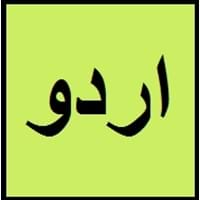Uzbek and Urdu
Countries
Turkey, Uzbekistan
India, Pakistan
National Language
Afganistan, China, Kazakhstan, Kyrgyzstan, Russia, Tajikistan, Turkmenistan, Uzbekistan
Pakistan
Second Language
Not spoken in any of the countries
Pakistan
Speaking Continents
Middle East
Asia, Oceania
Minority Language
Not spoken in any of the countries
India
Regulated By
Not Available
National Council for Promotion of Urdu Language, India, National Language Authority, Pakistan
Interesting Facts
- Uzbek is officially written in the Latin script, but many people still use Cyrillic script.
- In Uzbek language, there are many loanwords from Russian, Arabic and Persian.
- Urdu is a language of beauty and grace, that adds meaning to prose and charm to poetry.
- Different languages such as Arabic, Persian and Turkish gave birth and richness to Urdu.
Similar To
Kazakh and Uyghur Languages
Arabic and Hindi Languages
Derived From
Not Available
Ghaznavid Persian Language
Alphabets in
Uzbek-Alphabets.jpg#200
Urdu-Alphabets.jpg#200
Scripts
Arabic, Cyrillic, Latin
Arabic
Writing Direction
Not Available
Right-To-Left, Horizontal
Thank You
Rakhmat
آپ کا شکریہ
How Are You?
Qalay siz?
آپ کیسے ہیں؟
Good Night
Hayirli tun
گڈ نائٹ
Good Evening
Hayirli kech
سلام علیکم
Good Afternoon
Hayirli kun
گڈ آفٹر نون
Good Morning
Hayirli tong
گڈ مارننگ
Please
Iltimos
براہ مہربانی
Sorry
Kechiring!
معاف کرنا
I Love You
Sizni sevaman
مجھے تم سے محبت
Excuse Me
Iltimos! Menga qarang
معاف کیجئے گا
Dialect 1
Tashkent
Dakhini
Where They Speak
Not Available
India
How Many People Speak
Not Available
Dialect 2
Afghan
Hyderabadi Urdu
Where They Speak
Not Available
India
Dialect 3
Ferghana
Rekhta
Where They Speak
Not Available
South Asia
Second Language Speakers
Not Available
Native Name
أۇزبېك ﺗﻴﻠی o'zbek tili ўзбек тили (o‘zbek tili)
اُردُو
Alternative Names
Annamese, Ching, Gin, Jing, Kinh, Viet
Bihari
French Name
ouszbek
ourdou
German Name
Usbekisch
Urdu
Pronunciation
Not Available
[ˈʊrd̪u]
Ethnicity
Uzbek
Not Available
Origin
9th–12th centuries AD
12th Century CE
Language Family
Turkic Family
Indo-European Family
Subgroup
Turkic
Indo-Iranian
Branch
Southestern(Chagatai)
Indic
Early Forms
Chagatay
No early forms
Standard Forms
Uzbek
Modern Standard Urdu
Signed Forms
Not Available
Signed Urdu
Scope
Macrolanguage
Individual
ISO 639 6
Not Available
Not Available
Glottocode
uzbe1247
urdu1245
Linguasphere
No data available
59-AAF-q
Language Type
Living
Living
Language Linguistic Typology
Not Available
Not Available
Language Morphological Typology
Not Available
Fusional
All Uzbek and Urdu Dialects
Most languages have dialects where each dialect differ from other dialect with respect to grammar and vocabulary. Here you will get to know all Uzbek and Urdu dialects. Various dialects of Uzbek and Urdu language differ in their pronunciations and words. Dialects of Uzbek are spoken in different Uzbek Speaking Countries whereas Urdu Dialects are spoken in different Urdu speaking countries. Also the number of people speaking Uzbek vs Urdu Dialects varies from few thousands to many millions. Some of the Uzbek dialects include: Tashkent, Afghan. Urdu dialects include: Dakhini , Hyderabadi Urdu. Also learn about dialects in South American Languages and North American Languages.
Uzbek and Urdu Speaking population
Uzbek and Urdu speaking population is one of the factors based on which Uzbek and Urdu languages can be compared. The total count of Uzbek and Urdu Speaking population in percentage is also given. The percentage of people speaking Uzbek language is 0.39 % whereas the percentage of people speaking Urdu language is 0.99 %. When we compare the speaking population of any two languages we get to know which of two languages is more popular. Find more details about how many people speak Uzbek and Urdu on Uzbek vs Urdu where you will get native speakers, speaking population in percentage and native names.
Uzbek and Urdu Language Codes
Uzbek and Urdu language codes are used in those applications where using language names are tedious. Uzbek and Urdu Language Codes include all the international language codes, glottocodes and linguasphere.





